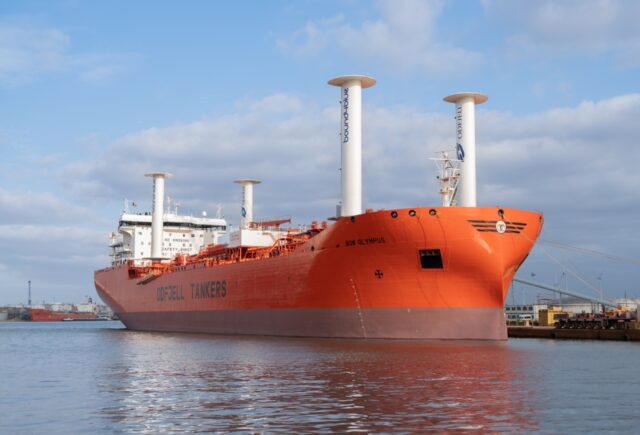Investors in real assets can harness urban design and nature-based solutions to safeguard against climate-related risks in cities and urban areas, say Emily Hamilton and Julie Futcher.

With the increasing frequency of extreme weather events, climate resilience has become essential. Cities and towns, as urban centres of population and economic activity, face unique challenges but also hold significant potential for driving climate adaptation. For investors seeking to maximise impact across their real assets allocation, understanding how both urban design and nature-based solutions contribute to climate resilience is critical. Indeed, the urban landscape offers resilience opportunities that extend beyond the building itself.
The urban heat island effect
Many of us are all too familiar with the intensified climate impacts experienced in our cities and towns. Walking through dense urban areas we feel notably hotter, and after rain, we find ourselves navigating large puddles that appear across the pavement and streets. Cities and highly urban areas generally retain more heat than their surrounding non-urban or rural areas due to less open space and denser environments. This phenomenon, commonly referred to as the Urban Heat Island (UHI) effect can place strain on infrastructure, energy systems, and public health.
The UHI arises as urban surfaces – like roads, buildings and pavement – absorb and release heat, raising air temperatures by trapping warmth between structures. Impermeable surfaces, which prevent water absorption, further intensify this effect contributing to prolonged periods of elevated temperatures alongside increased flooding risks.
These examples highlight the opportunity to deliver urban landscape solutions that go beyond the individual building. Investors, particularly those focused on dense urban locations, must consider the resilience of the urban landscape to safeguard against these climate-related risks.
The role of the urban landscape in climate resilience
The design and layout of the urban landscape is central to its ability to adapt to and mitigate the effects of climate change. Building height, density, street orientation, and the integration of green spaces and permeable surfaces all play crucial roles in shaping the urban climate.
For instance, the geometry of street canyons influences wind flow, levels of sunshine and in turn, levels of shading, while the strategic placement of buildings and green (open) spaces also influence air circulation and cooling.
Even small changes in the urban landscape can lead to significant variations in temperature regulation and air movement. By enhancing airflow, managing solar exposure and offering the physical space needed for nature-based solutions, the built form of the urban landscape becomes a foundation for opportunity.
Investors should evaluate how developments incorporate these elements, ensuring a resilient environment that supports both natural and built elements. An urban area designed with adaptive measures such as permeable pavements, ventilation opportunities and shading, not only protects its residents and local community, but can also enhance the value and longevity of its assets.
Investor considerations
Nature-based solutions offer multifunctional benefits that align with both environmental and investment goals. Solutions like green roofs, walls, urban forests, and permeable surfaces are essential tools for building urban climate resilience. These solutions, enhanced by the design of the urban landscape, support natural processes, help manage heat, reduce air pollution, mitigate flood risk, and enhance biodiversity.
The first of these solutions is urban vegetation and open spaces. Parks, green roofs, walls and street trees reduce temperatures through shading and evapotranspiration, supporting biodiversity and improving air quality. For investors, a consideration will be around seeking opportunities to integrate or enhance green infrastructure, which add both resilience and ecological property value.
A second solution is around blue infrastructure. Water-related features and systems like ponds and rivers promote biodiversity, provide flood and drought management and offer recreational spaces. Investors should assess the availability, accessibility, and quality of all nearby water features as they typically enhance property appeal and liveability.
Another solution is around Sustainable Drainage Systems (SUDS). SUDS include things like permeable pavements to manage stormwater, reduce flood risk and promote biodiversity. Investors should identify or implement effective water management systems, as they can reduce the risk of property damage and disruption in extreme weather events.
Another area is the design of the urban landscape itself. Buildings should be viewed as part of a larger ecosystem, considering that a property’s interactions with its surroundings can amplify its positive impact and support sustainability. Investors should assess how any building interacts with its environment, as this can enhance its long-term value and resilience.
Finally, investors should also look at urban density and layout. Well-designed urban spaces that balance building density with climate resilience initiatives can enhance thermal comfort, reduce cooling demands, and improve overall liveability. Investors should think about how the building contributes to or benefits from local climate resiliency efforts. For example, building density and street orientation influence ventilation, natural light, and energy use.
The future of climate-resilient cities
Achieving climate resilience requires a holistic approach that combines strategic urban design with nature-based solutions and operational efficiency across the urban landscape.
Buildings cannot function as isolated ‘energy islands’, but instead must be integrated as part of a resilient ecosystem. For investors, incorporating these principles into real estate evaluations provides a complete assessment on how an investment can remain impactful, financially viable, and future-proofed.
Prioritising developments that integrate nature-based solutions and climate adaptive urban design will strengthen urban resilience, reduce environmental risk, and improve the quality of urban life. We believe investors can drive the transformation towards more liveable, adaptive, and thriving cities.
Emily Hamilton is chief sustainability officer at Savills IM, and Julie Futcher is a chartered architect and associate lecturer at University of the Arts London.






